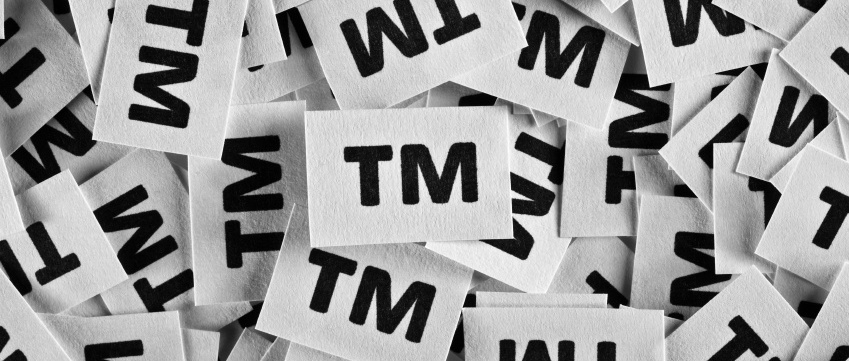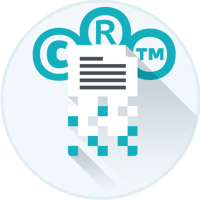
Intellectual property is the capital of ideas. It is everything left over after cash and tangible assets, which these days is most of any given company. It is “intellectual” because it is value that’s created from the neck up. It is “property” because it can be legally protected, bought, sold, traded, donated, collateralized or otherwise controlled.
There are four primary legal boxes in which intellectual property assets are placed: trade secrets, patents, trademarks and copyrights. They are not mutually exclusive. They can and should overlap in strategically sensible ways, providing belt and suspender protection and perhaps adding revenue streams (e.g., royalties from licensing out technologies you’ve patented and separate licensing income from brands you’ve created and trademarked around them). In other words, intellectual property assets are not just legal rights that lawyers care about; they’re strategic business assets with lots of profit potential.
This piece covers some key trademark basics.
Definition and Application
The United States Patent & Trademark Office defines a trademark as “a word, phrase, symbol, and/or design that identifies and distinguishes the source of the goods of one party from those of others.” Service marks are essentially the same, though they apply to services.
Related to trademarks is a form of intellectual property known as trade dress protection. This has traditionally been applied to unique packaging design such as a distinct bottle shape (the manner in which a product is “dressed”), but has been extended to include distinctive environments such as a Starbucks coffee shop or an Apple store. A good primer on trademarks can be found here at the USPTO: https://www.uspto.gov/sites/default/files/documents/BasicFacts.pdf.
In all cases, the best trademarks will come to create an instant mental association between a product or service and its source. Examples include a particular sounding lion roar for an MGM movie, a brown truck for UPS, a colorful peacock for NBC, green and yellow outdoor power equipment for John Deere.
Trademarks do not expire as long as you are making active and proper use of them in conjunction with associated goods or services and government fees are paid when due (for registered marks). They do not necessarily require governmental registration to be in effect; they can apply through abundant use in commerce if they do not conflict with other marks. But this is not recommended. Registration of a trademark affords far superior protection against other similar marks, as well as stronger legal remedies in the event of infringement of your mark.
Registering Your Trademark
Trademark registration is accomplished by filing an application with the proper government office. In the U.S., this would be the United States Patent & Trademark Office. There are treaties and other international agreements in effect, such as the Madrid Protocol, whereby one can efficiently file one application in one language and pay one fee for registration in multiple signatory nations.
 It is prudent to do a preliminary assessment of a trademark you’re contemplating before filing an application. There could be obvious reasons to forego the mark, such as that it is similar to something already out there or it’s a word or phrase that is already common or “generic.” Common or publicly recognized phrases cannot be registered. You can do a simple search on the internet to see how prolific the proposed mark might be, but it may not produce reliable enough results. Unless you can immediately rule out a proposed mark for some obvious reason, you’d then want to conduct a more thorough clearance process to help ensure there’s no “likelihood of confusion” with someone else’s trademark rights.
It is prudent to do a preliminary assessment of a trademark you’re contemplating before filing an application. There could be obvious reasons to forego the mark, such as that it is similar to something already out there or it’s a word or phrase that is already common or “generic.” Common or publicly recognized phrases cannot be registered. You can do a simple search on the internet to see how prolific the proposed mark might be, but it may not produce reliable enough results. Unless you can immediately rule out a proposed mark for some obvious reason, you’d then want to conduct a more thorough clearance process to help ensure there’s no “likelihood of confusion” with someone else’s trademark rights.
A trademark application requires that the applicant provide a clear description of the proposed mark and how it will be used (or is being used) in conjunction with associated products or services, as well as a specimen. In addition, you must select one or more classification codes for the mark depending on the desired field of usage or markets you’re going into. You should choose each class code that covers the scope of your intended use. For example, if you conceive a name or logo to cover software you create, you might select the class code for computer programs. But if you intend to include a manual with the software and you overlook the class code for books and publications, the oversight could deprive you of protection against similar marks being used for books and publications. Or if you intend to include certain consulting services which you want the trademark to apply to as well, you might consider adding the classification code for “business consultation and information services.”
Once an application is submitted and any modifications are made at the behest of the government office where you filed, if the trademark is approved, there is a brief period of time wherein third parties who believe your proposed mark is too similar to theirs can file an “opposition.” If no opposition is filed or if you overcome any objections, the mark will be registered. There will be periodic maintenance fees due in order to keep the mark going.
It is a good idea to work with competent legal counsel in order to help ensure both that your trademark applications will be successful and that your marks will be strong. Identify those marks that are most likely to give your company a competitive advantage or that you believe has the most value, and focus on those for optimized strength and for filing internationally. Strong trademarks and service marks, combined with targeting countries for registration that offer strong protections, will result in the most significant valuations for this portion of your intellectual property portfolio.
Making a Strong Trademark

Successful registration of a mark does not insulate it from being attacked later. The stronger the mark, the broader the scope of legal protection a court will give. Strong marks are often given protection even against “senior” users - those who had a first use but failed to register, and against infringers who are not necessarily involved in the same business or market. The converse also applies. A weak mark could lose out to a “junior” user or others within the same field.
Trademark strength is assessed along a continuum. Some examples come from the International Trademark Association. A mark is strongest if it is fanciful or made up (such as Exxon for petroleum products and Google for online services). It is still strong if the mark is arbitrary, i.e., something with common meaning but applied to an unassociated product or service (such as Apple for computers). A mark is weaker if it is suggestive (alluding to a feature of the product or service but still requiring a mental leap, such as Jaguar or Mustang for a car). It is weaker still - and not likely registrable - if it is merely descriptive of the associated product or service (a feature such as a product that is creamy, or someone’s surname, or a geographical location) although a descriptive mark can take on “secondary meaning” and thus become protectable. For this, one would need to demonstrate that the “descriptive” mark has, over time, come to be associated by the public with a single source as opposed to merely a literal product description (International Business Machines, McDonald’s, Bank of New York). Marks that are generic are not registrable and will not enjoy any legal protection (“email” for example). In other words, the more distinctive a mark, the stronger it is. In addition, the stronger and more pervasive your position in the marketplace (i.e. the more commercial strength it has), the stronger your trademark(s) will be.
 Proper use of a trademark is very important to maintaining its strength, integrity and enforceability. In fact, improper use can cause it to be cancelled by a competitor or become generic and thus unenforceable as a trademark (examples: aspirin, nylon, cellophane, linoleum, yo-yo). Thus your trademark should not have a circle r (®) unless it is officially allowed and registered by the government. The “™” can be used prior to registration, indicating you have a good faith belief that you have trademark rights. Additionally, if your mark is a word or phrase, it should be used exactly as written or stylized; it should not be used as a verb or a noun, or in the plural or possessive.
Proper use of a trademark is very important to maintaining its strength, integrity and enforceability. In fact, improper use can cause it to be cancelled by a competitor or become generic and thus unenforceable as a trademark (examples: aspirin, nylon, cellophane, linoleum, yo-yo). Thus your trademark should not have a circle r (®) unless it is officially allowed and registered by the government. The “™” can be used prior to registration, indicating you have a good faith belief that you have trademark rights. Additionally, if your mark is a word or phrase, it should be used exactly as written or stylized; it should not be used as a verb or a noun, or in the plural or possessive.
Prudence dictates that you be vigilant in protecting your trademarks. Often there is significant investment behind the activities that go into the creation and maintenance of a brand and the valuable trademarks around it. Aside from the scrutiny that should be placed on any third party to whom you might license your marks, it is wise to monitor the market, trademark office filings, domain names and state corporate name registrations among other sources for confusingly similar usages. Consider using outside counsel and/or trademark monitoring services to augment your own efforts. In serious cases, asserting your rights could serve as a deterrent to others down the road.
The Value of Your Trademark
The value of a unique and trusted identity in a marketplace cannot be overstated. Trademarks associated with quality products and services build credibility and loyalty, and lead consumers back to your company or organization; they differentiate you from competitors. Coca-Cola is always a good example. It has been estimated that the Coca-Cola brand, including the constellation of trademarks covering myriad products that drive consumers to purchase, represents 60-70% of the value of that company. Although Apple has now taken the number one spot in terms of estimated value of the brand, it has been said in the past by the Coca Cola Company that their flagship brand is the most recognized trademark in the world, with 94% of the world’s population recognizing it, and it is the most widely recognized word after “OK”.
Trademarks can be significant drivers of revenue. As mentioned above, enduring trademarks lead consumers to associate them with quality, credibility and trust and keep those consumers coming back. Furthermore, trademarks can be licensed to others and effectively expand your market with little investment if you have a strong brand (e.g., sporting equipment or toy manufacturers paying royalties for use of popular sport franchise or toy brands). In such arrangements, care must be taken to ensure the integrity of your trademarks through proper usage guidelines and scrutiny of the licensee’s reputation and quality of their offerings.
Strong trademarks can also help to preserve market share. For example, patents have a limited lifespan of (typically) 20 years. As such, a company will lose its right to exclude others from making, using, selling, or importing technologies or other inventions that are patent-protected as soon as that time expires. To better defend against competitors in those scenarios, businesses will develop brand recognition and association with the patent and maintain continuous trademark protection. An example might be Pfizer’s version of sildenafil, more commonly known by its brand name Viagra. When the Viagra patent expires in 2020, it will nonetheless be challenging for competitors to take substantial market share from the strength of the Viagra brand name.
Managing several trademarks is difficult to do manually. Things will inevitably slip through the cracks if you’re maintaining the information in banker boxes, file folders and various spreadsheets. There are better ways to augment your human efforts.
Good tools and technologies exist to provide an organized, categorized, central secure repository of trade secrets. Decipher® from Innovation Asset Group is one example. Check it out here: http://www.innovation-asset.com/products-decipher.
PLEASE NOTE: IAG is not in the business of providing legal advice nor does this information represent such advice, for which competent professionals should always be sought. No warranty or other representation is provided regarding the accuracy or completeness of the information contained herein. All trademarks are property of their respective owners and IAG claims no affiliation with any such owners.


